WHEN SARATOGA AVENUE WAS YOUNG (1899)
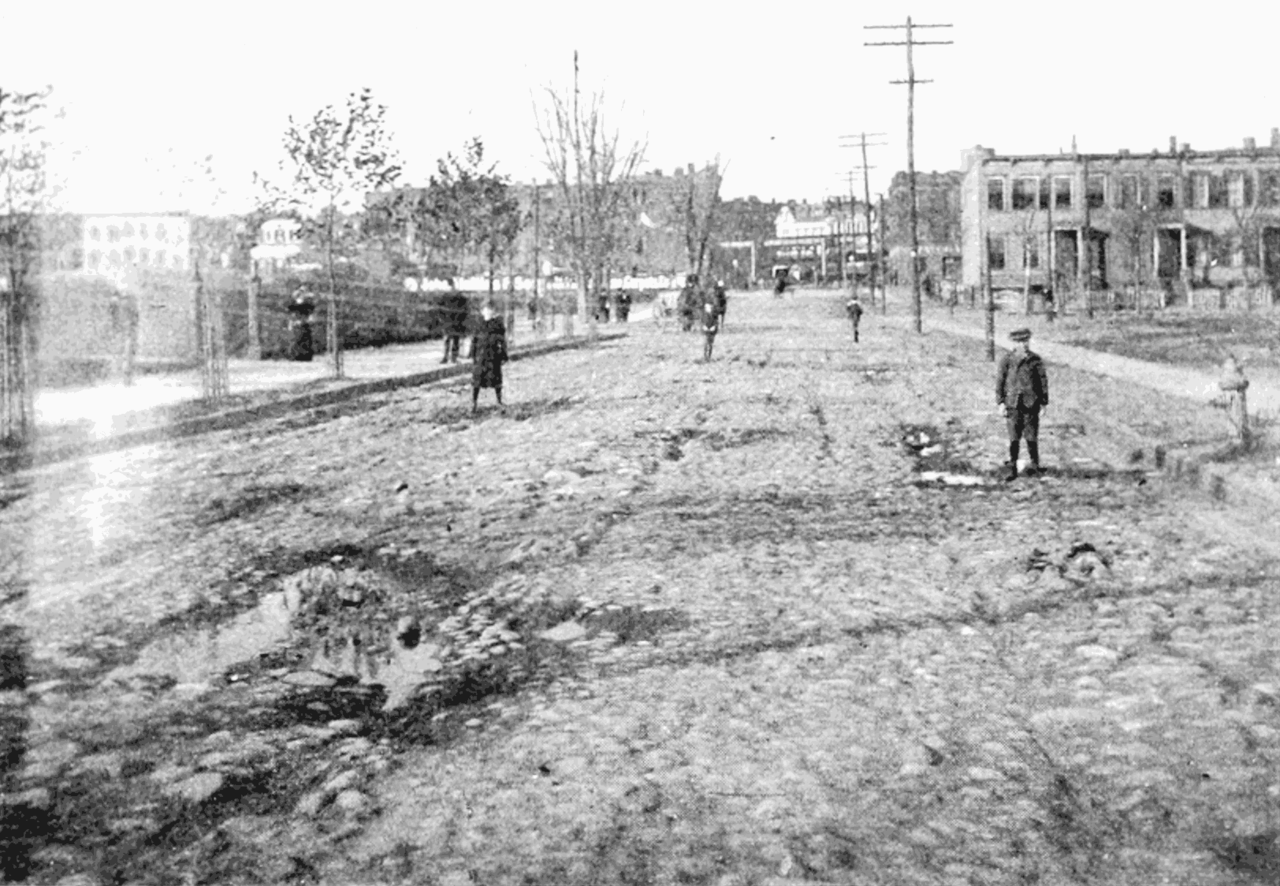
******************************************************************************************************************************** Brownstone Detectives investigates the history of our clients’ homes. The story you are about to read was composed from research conducted in the course of one of those investigations. Do you know the history of YOUR house? ******************************************************************************************************************************** We’d never seen this 1899 picture before – the cobblestones of Saratoga Avenue – taken from Macon Street looking north. To the left you see the gates of the 3-year old Saratoga Square Park and to the right, what was known then as Saratoga Field. A few years before this shot was taken, you would have seen the circus and the various Wild West shows of the time camping out on these two blocks, attracting crowds of people from miles around to the neighborhood. In the distance, you can see the elevated Brooklyn Rapid Transit track, known around this time as the Broadway Elevated, which had opened in 1893 and was a 2-track line at the time. That’s right – no express! And staring back at you are some of the folks who lived and played in the area. It appears from the shot that they were positioned by the photographer. They’re all standing still and upright. Across the street from the park (on the right side of the photograph) would soon be built the Arcadia Dancehall, a “modern dancehall for working girls,” where the modern dances of the day – such as the Bunny Hug and the Tango – were forbidden. Vice President Calvin Coolidge and Teddy Roosevelt’s son, Theodore, […]
WHEN BUSHWICK MET OCEAN HILL (1923)
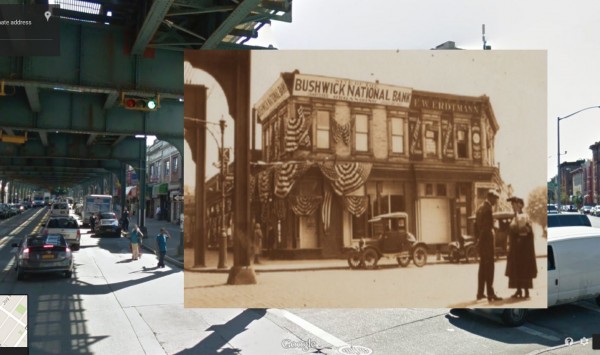
******************************************************************************************************************************** Brownstone Detectives investigates the history of our clients’ homes. The story you are about to read was composed from research conducted in the course of one of those investigations. Do you know the history of YOUR house? ******************************************************************************************************************************** “Ocean Hill” was still settling softly into the Brooklyn lexicon of place names as a working class suburb in 1923. Bushwick, on the other hand, was already very well-known in the borough for its German breweries and beer gardens. But where the two met – and they met, all right – there were SPARKS! (…or maybe a bank or real estate office….) This snapshot was taken at the intersection of Broadway and Hopkinson Avenue (later to be renamed Thomas S. Boyland Street). The building there on the corner in 1923 held the Bushwick National Bank and Frederick W. Erdtmann’s real estate offices. The Bushwick National Bank came into existence the same year that this photograph was taken – probably the reason for the photograph and the patriotic bunting all around the building; the bank ended up merging with the Globe Exchange Bank in 1929, and so had a short life of about six years. Frederick W. Erdtmann, a realtor who lived at 868 Macon Street and then above his real estate offices in this building, had filed for bankruptcy in 1913 before this photo was taken. He was back in the real estate business by 1919 and did well for himself in the 1920s. Who the old woman and the young […]
ATLANTIC TERMINAL – 1910 vs. 2018
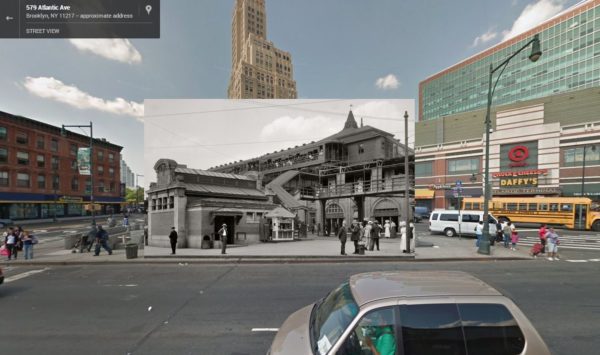
******************************************************************************************************************************** Brownstone Detectives investigates the history of our clients’ homes. The story you are about to read was composed from research conducted in the course of one of those investigations. Do you know the history of YOUR house? ******************************************************************************************************************************** We found a photograph taken at the “Atlantic Avenue subway entrance,” circa. 1910, and superimposed it onto an image taken from the same location, circa. today (courtesy Google Maps). The old picture shows an elevated railway and streetcar tracks in the background – the elevated railway is now underground and the streetcar has been replaced by city busses. If you look closely at the train cars, you can see that they are open on the sides, showing the time of year the photograph was taken. Also telling of the period (and the time of the year) are the boaters that the men are wearing – they were en vogue in mean’s spring/summer fashion at the time. There are also a couple of policemen, looking very much like London “bobbies” or “Keystone Cops” with their distinctive helmets. Notice anything else? Follow @BrownstoneDetec Share ———————————————————————————————————————– The Brownstone Detectives Brownstone Detectives is an historic property research agency. Our mission is to document and save the histories of our clients’ homes. From our research, we produce our celebrated House History Books and House History Reports. Contact us today to begin discovering the history of your home.
THE TRAIN THAT RAN ABOVE LEXINGTON (1947)
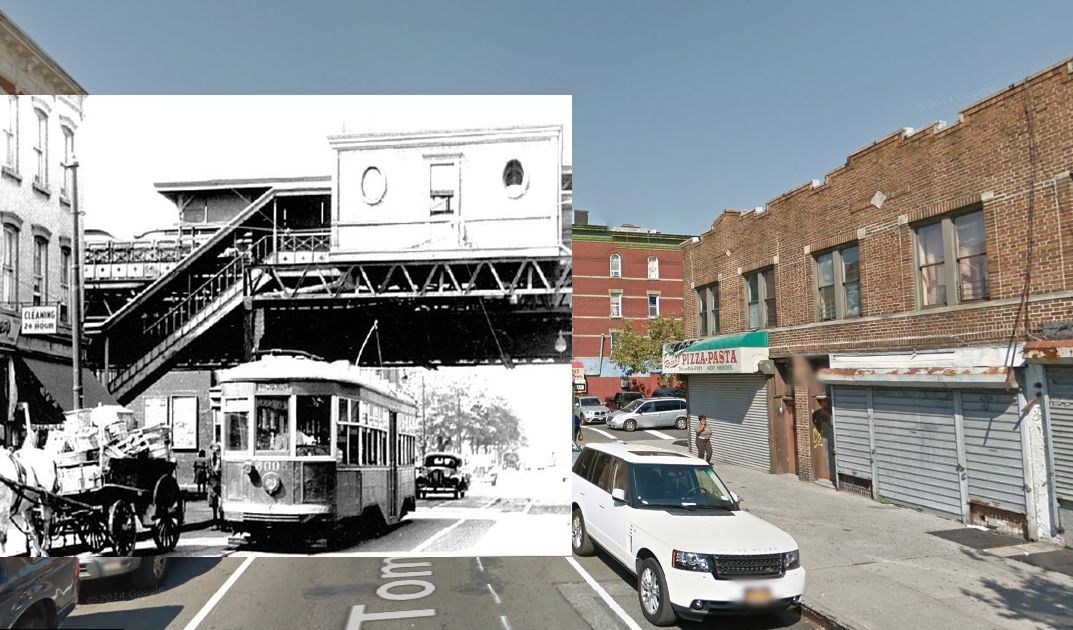
******************************************************************************************************************************** Brownstone Detectives investigates the history of our clients’ homes. The story you are about to read was composed from research conducted in the course of one of those investigations. Do you know the history of YOUR house? ******************************************************************************************************************************** Yes, there not only used to be a streetcar running down Tompkins Avenue in Bedford-Stuyvesant, but Lexington also at one time had sported its very own elevated subway train. Opening in 1885, the Lexington elevated train was in the vanguard of bringing owners and potential homebuyers to the Bedford and Stuyvesant Heights areas. The Lexington Avenue “el,” as it was called, split from the Myrtle Avenue elevated (yes, there was one up there, too) at Grand Avenue, where it headed down to Lexington then turned east and headed in the direction of Broadway. Taken in 1947, this picture shows the confluence of these two avenues and forms of transportation. You can also see automobiles of the period and an anachronism – even for the times – a horse with its cart parked along Tompkins. A few years after this picture was taken, demolition began on the elevated line. Read more about this line (and how long traces of it existed even after it had been demolished) on Forgotten New York. Follow @BrownstoneDetec Share ———————————————————————————————————————– The Brownstone Detectives Brownstone Detectives is an historic property research agency. Our mission is to document and save the histories of our clients’ homes. From our research, we produce our celebrated House History Books and House History […]
THE DIRTY, JERKY, FOUL “L” TRAIN (1892)
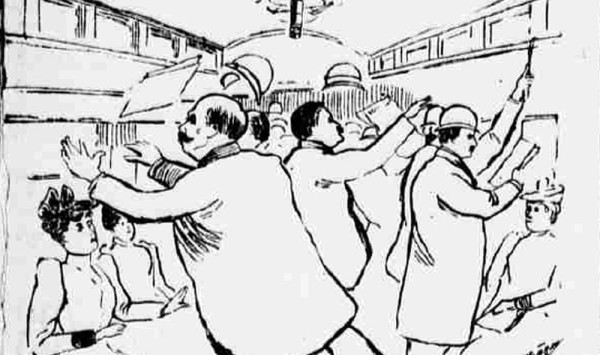
******************************************************************************************************************************** Brownstone Detectives investigates the history of our clients’ homes. The story you are about to read was composed from research conducted in the course of one of those investigations. Do you know the history of YOUR house? ******************************************************************************************************************************** In 1892, the “L” Train was killing Brooklynites. At least if you were to read Joseph Pulitzer’s New York World in the early 1890s, that’s the impression you would have gotten. The campaign that the newspaper developed to improve elevated service would have had you believe that the elevated train (the “L”) – which delivered passengers from the Brooklyn Bridge to their homes throughout the borough (and vice versa) – was just as liable to kill you as to get you safely home. If you had spoken to an “L” Train rider back then, too, you would have had further proof that all of this was true. Today, while the mode of travel and the specifics thereof, at their base, are different from those which we have at our disposal, many straphangers’ complaints concerning the slowness of the subway, the dirtiness of the cars and stations, and the lack of train cars, ring as true today as they did 125 years ago. Which begs the question, “Has anything really changed?” Here follows some of the prize-winning….ahem…..yellow journalism illustrations that may better illustrate the problems existent in 1892. “The crowding and pushing that you have witnessed to-night could be avoided if the Company would only put on more trains,” stated one rider. […]
A COLLAPSE, A DEATH, & AN INQUIRY (1912)
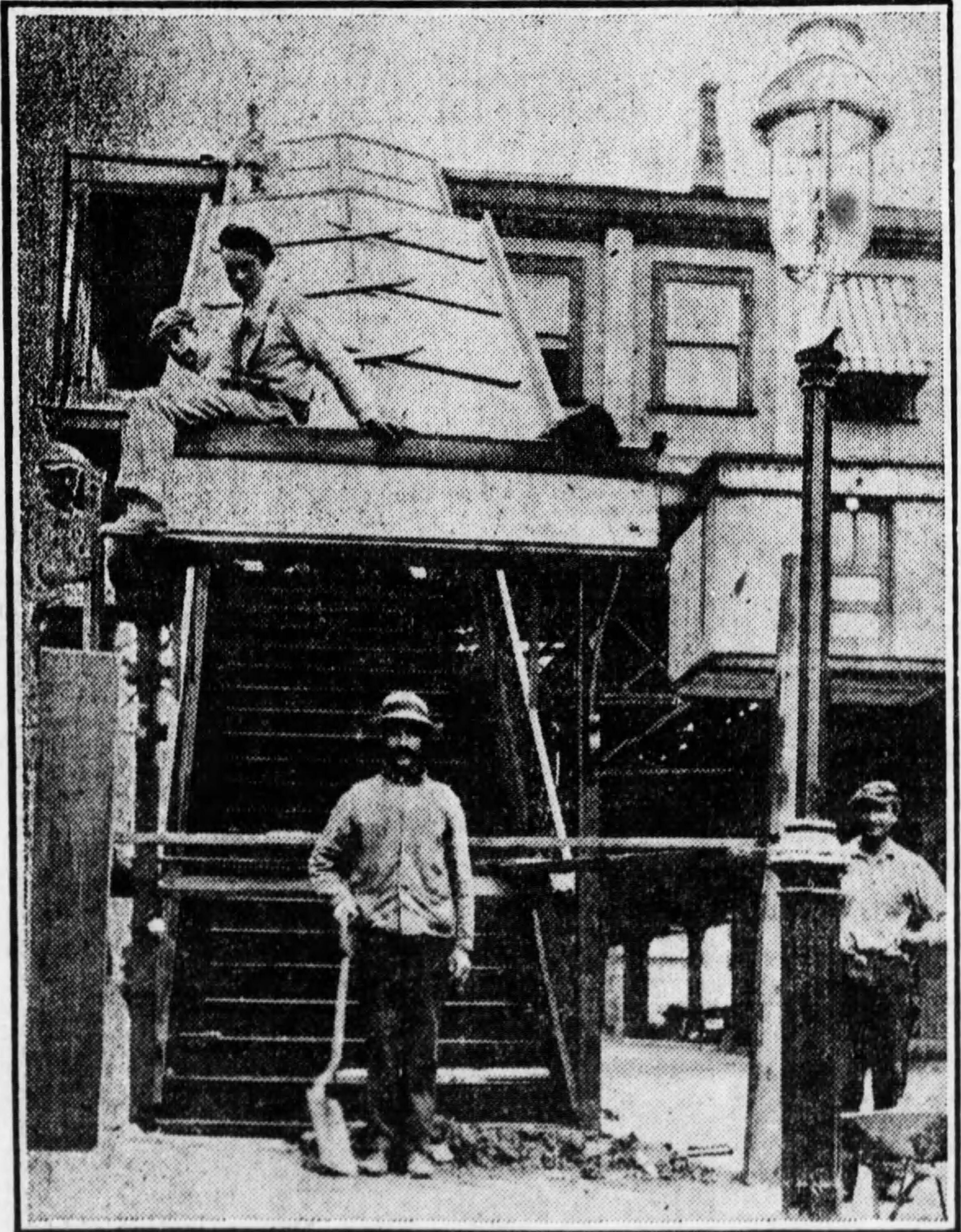
******************************************************************************************************************************** Brownstone Detectives investigates the history of our clients’ homes. The story you are about to read was composed from research conducted in the course of one of those investigations. Do you know the history of YOUR house? ******************************************************************************************************************************** It happened just before Christmas of 1912. A young husband in the prime of his life rushes to buy a last-minute Christmas gift for his beautiful wife. With the pearl necklace safely deposited in his suit-coat pocket, he dashes to catch the train that is approaching. Rushing up the stairwell to the Long Island Rail Road (L.I.R.R.) platform, he quickly reaches the top step. As he turns the corner to run for the platform, he barely senses the very stairwell beneath him shifting almost imperceptibly beneath his feet. Then, as a loud crack reports his entire balance has shifted, and he is suddenly in a terrifying free-fall. Seconds later the young husband’s body is covered with tons of – what had seconds before been – concrete stairs. This fatal collapse of the L.I.R.R. stairwell occurred at Atlantic and New York avenues, and was subsequently blamed on the corrosion of two cast-iron posts which supported the entire concrete structure. The tragedy on the L.I.R.R. stairway at New York and Atlantic avenues ended in the sudden death of a well-known art expert, David H. Cochran of 113 Macon Street. THE BEGINNING OF A “BIG” INQUIRY The very day afterward, as the finger-pointing already began to take place, a “big” inquiry was established which […]